
蓝宝石:颜色、含义、价格和益处
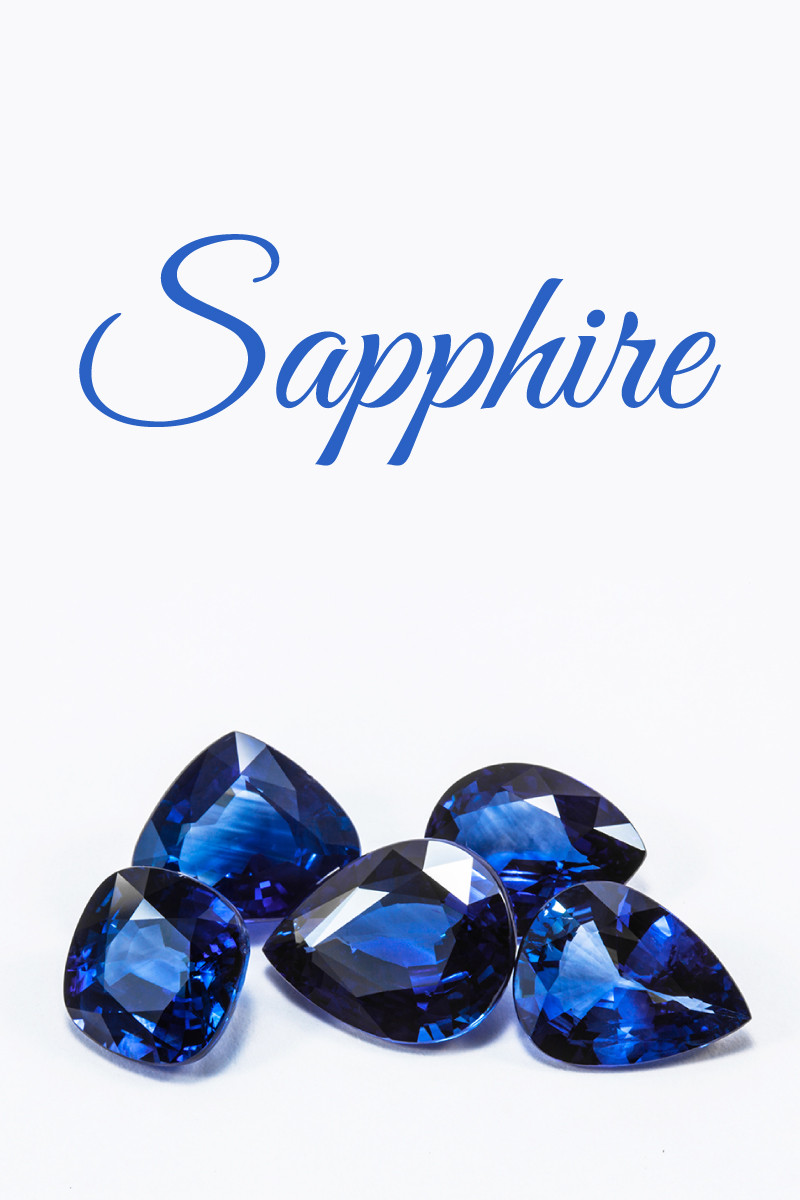 蓝宝石是一种刚玉类宝石,自古以来备受人们喜爱,原因有很多。除了其美丽的色彩外,人们还因其所谓的灵性力量和在工业应用中的耐用性而推崇蓝宝石。
蓝宝石是一种刚玉类宝石,自古以来备受人们喜爱,原因有很多。除了其美丽的色彩外,人们还因其所谓的灵性力量和在工业应用中的耐用性而推崇蓝宝石。
尽管蓝宝石拥有彩虹般的色彩,却很难将其与蓝色区分开来。事实上,直到中世纪,“蓝宝石”一词才被用来描述青金石和其他蓝色宝石。如今,“蓝宝石蓝”指的是宝石本身的颜色,在各种艺术作品中都能看到。
什么颜色的蓝宝石最稀有?这个问题目前尚无定论,但大多数宝石学家认为克什米尔蓝或帕帕拉恰蓝宝石最为稀有。
不认识这些术语?别担心!本指南将详细介绍每种蓝宝石的颜色和种类,以及这种传奇宝石的历史、价格和含义。
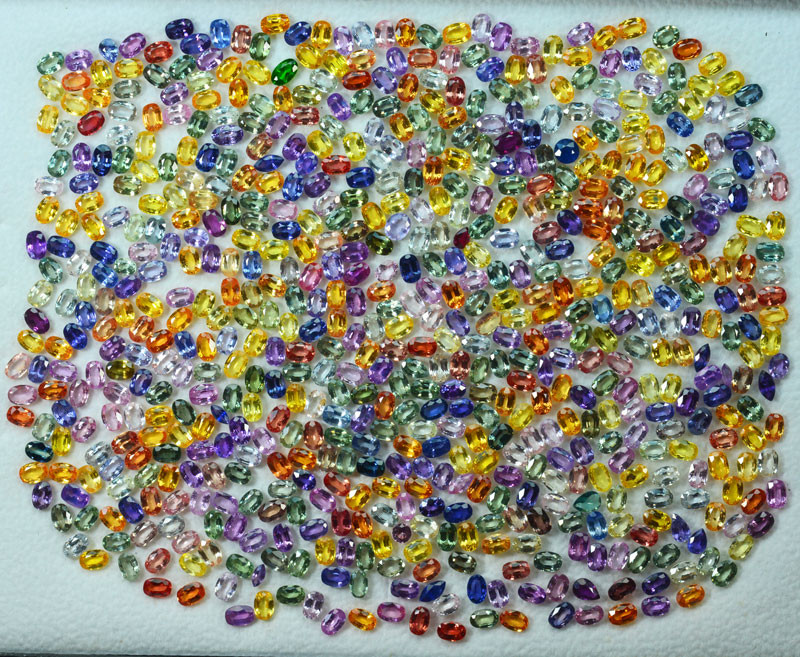
关于蓝宝石
无论颜色如何,蓝宝石都是四大珍贵宝石之一。蓝宝石的诞生石是为了纪念 九月出生的人,尽管它历史上曾是四月的诞生石。蓝宝石也是结婚五周年、四十五周年和六十五周年的纪念宝石。从占星学的角度来看,蓝宝石是金牛座的星座石。
某些蓝宝石的颜色在阿育吠陀(或印度教)占星术中很重要。在印度占星术中,蓝色蓝宝石(称为Neelam)代表土星,而黄色蓝宝石(称为Pukhraj )代表木星。
蓝宝石是美国蒙大拿州和澳大利亚昆士兰州的州宝石。
除了珠宝之外,蓝宝石还有一些重要的工业应用,包括:
手表
电子晶圆
半导体元件
LED基板
超耐用窗户(包括用于红外光学的窗户)
如果您拥有不锈钢或钛金属型号的 Apple Watch,它可能包含蓝宝石玻璃!
蓝宝石具有工业用途的原因之一是它们在莫氏矿物硬度等级中排名很高,这是我们接下来要讨论的特性之一。
蓝宝石规格和特性
蓝宝石是刚玉的两个品种之一,另一个是红宝石。刚玉矿物由氧化铝组成。
通常,蓝宝石呈平端棱柱形、桶形或双锥体晶体。
下面我们列出了蓝宝石的矿物特性。
(有关蓝宝石的具体颜色特性,如多色性或发光颜色,请查看下一节中链接的每个蓝宝石颜色指南。)
矿物家族:刚玉
莫氏硬度:9
颜色:除红色外的所有颜色;可能存在色域
晶体结构:六方(三角)
光泽:玻璃光泽至亚金刚石光泽
透明度:透明至不透明
折射率:1.757-1.779
密度:3.99-4.10
解理:无
断口:贝壳状
条痕:白色
发光:除黑色、绿色和大多数蓝色蓝宝石(天然)外,所有蓝宝石都存在荧光,所有颜色的荧光程度各不相同(合成);来自斯里兰卡、克什米尔和蒙大拿州的一些标本的 X 射线颜色为暗红色或黄橙色
多色性:在大多数蓝宝石颜色中都存在且非常强烈
双折射率:0.008-0.009
分散度:0.018
光学效果:星光、猫眼效应、变色
那么,蓝宝石有哪些颜色呢?
蓝宝石颜色列表
所有非红色刚玉都被视为蓝宝石,这意味着蓝宝石几乎有所有其他颜色。不同颜色代表着更稀有、更受欢迎或更珍贵。每种颜色都源于不同的杂质。
让我们从最常见的蓝宝石颜色开始:蓝色。
蓝宝石
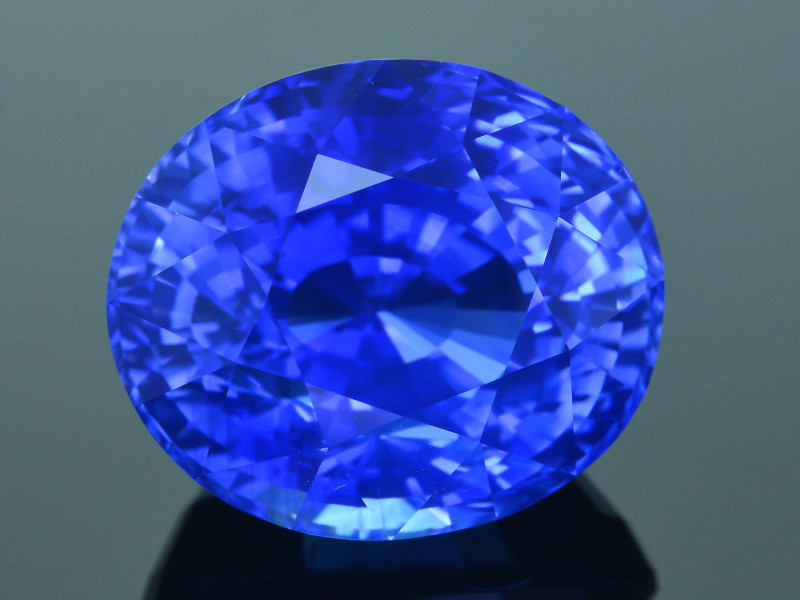
毫无疑问,蓝色是蓝宝石最受欢迎的颜色,这种颜色自古以来就与蓝宝石息息相关。这种颜色源于蓝宝石中含有的铁和钛杂质,钛含量越高,颜色越深。
任何次要底色(如紫色或绿色)只能占整体颜色的 15% 或更少,才能将宝石归类为蓝色蓝宝石。
蓝宝石需求量很大,尽管并不稀有,但价格却比其他颜色的蓝宝石高。
也就是说,某些颜色比其他颜色更稀有、更有价值。
蓝宝石的主要类型有:
克什米尔:被广泛认为是最好的蓝宝石颜色,深矢车菊蓝色,由于含有丝绸内含物而具有天鹅绒般的外观,产自喜马拉雅山,但极为罕见。
矢车菊蓝:纯蓝色(矢车菊)色调,与克什米尔不同,来自其他来源。
皇家蓝:深沉、鲜艳的蓝色,带有紫色至紫罗兰色的底色。
冰蓝色:淡淡的冰川般的蓝色,通常带有绿色底色。
Yogo :来自美国蒙大拿州 Yogo Gulch 的高品质矢车菊蓝宝石。
锡兰(斯里兰卡) :产自斯里兰卡的淡蓝色至浓郁蓝色蓝宝石,具有极佳的饱和度、闪烁度和亮度。
当然,这并非涵盖所有颜色。你会看到很多描述词,例如淡蓝色、靛蓝色、海军蓝、暮光色等等。
所有剩余的非蓝色蓝宝石都被称为“彩色”蓝宝石或“彩色”蓝宝石。
粉红蓝宝石
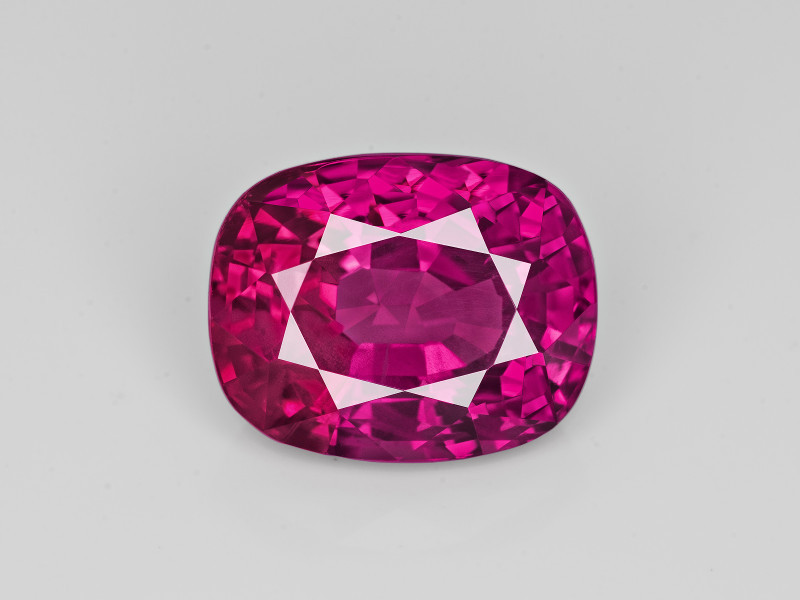
粉红色蓝宝石因含有少量铬杂质而呈现淡红色。常见的底色是紫色、橙色或黄色。浅粉色和洋红色是流行色。
宝石学家对红宝石和粉色蓝宝石之间的确切区别意见不一。有些人将粉红色刚玉归类为红宝石,而另一些人则只将以红色为主的刚玉归类为红宝石。
由于红宝石较为稀有,许多卖家可能会选择将粉红刚玉标记为“红宝石”来抬高价格,因此购物时请记住这一点。
紫色蓝宝石
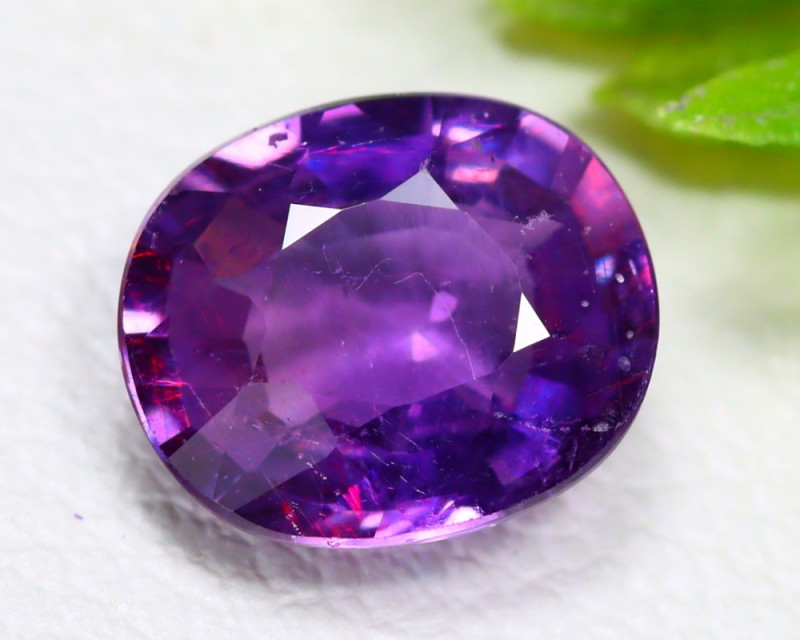
紫色蓝宝石相当罕见。它们的紫色可能来自钒,或铬、钛和亚铁的混合。常见的底色是红色、粉色、蓝色和灰色。
从价值上看,紫色蓝宝石低于蓝色蓝宝石,但高于黄色和绿色蓝宝石。
一个著名(或臭名昭著)的例子是德里紫色蓝宝石,它实际上是一种紫水晶。
黄色蓝宝石

黄色蓝宝石的色调从浅到深,最珍贵的是鲜艳的金丝雀黄色。黄色源于三价铁 (Fe3+) 杂质。常见的底色为绿色、橙色、棕色和粉色。
在印度占星术中,黄色蓝宝石被称为“Pukhraj” ,与木星有关。
橙色蓝宝石
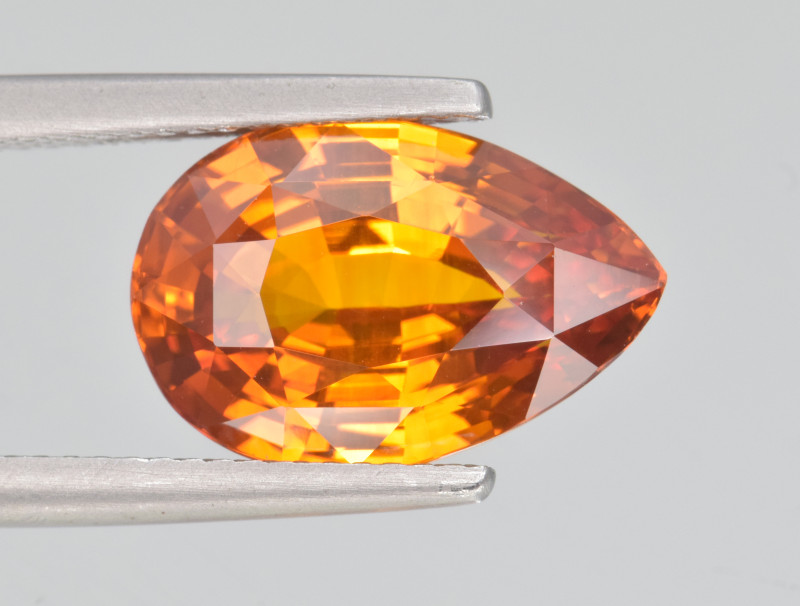
橙色蓝宝石最好呈现明亮的红橙色或纯橙色。这种颜色可能是由于铬和铁杂质的混合,或受辐射(天然或实验室诱导)的影响。常见的底色是黄色、红色、棕色或粉红色。
一些橙色蓝宝石经过铍扩散处理,将浅绿色至黄色的蓝宝石变成鲜艳的橙色。
绿色蓝宝石

绿色蓝宝石的色泽丰富多样,从淡彩到深邃的森林绿,应有尽有。其颜色源于三价铁 (Fe3+) 和二价铁 (Fe2+) 杂质的混合物。常见的底色为黄色、灰色
由于储量丰富且不为人所知,绿色蓝宝石的价格更加实惠,甚至可以作为祖母绿的替代品。
白色蓝宝石

白色蓝宝石根据其透明度和净度,可以是白色或无色。这是最纯净的刚玉,几乎不含任何杂质。天然蓝宝石非常罕见,因此市面上大多数都是合成或经过处理的。
这种蓝宝石是除钻石之外的常见订婚戒指替代品。
黑色蓝宝石
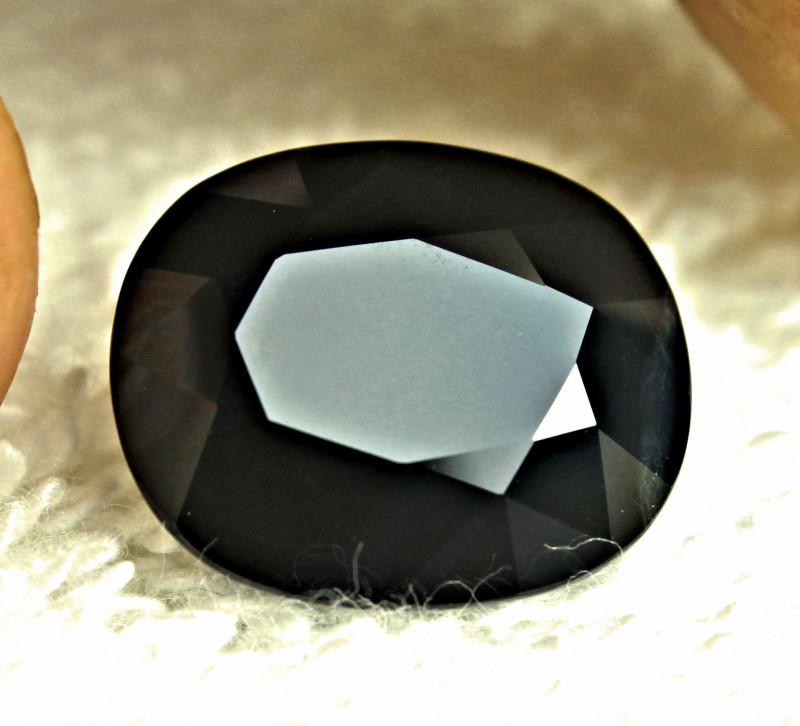
黑色蓝宝石不太受欢迎,它不透明,由铁和大量钛元素构成。它的颜色可能非常深,呈蓝色、绿色、紫色或灰色。大多数珠宝商认为黑色蓝宝石质量较差,除非它们是黑色星光蓝宝石。
独特的是,黑色星光蓝宝石的“星光”源自赤铁矿和钛铁矿内含物。有时,这些星光蓝宝石会呈现出12道光芒,并带有白色和金色光芒。
在蓝宝石中,黑色蓝宝石是唯一具有强磁性的蓝宝石。
棕色蓝宝石
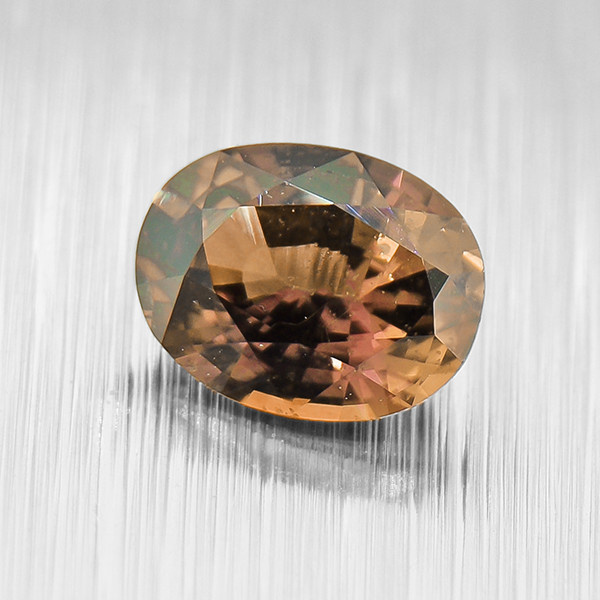
随着巧克力色钻石的兴起,棕色蓝宝石最近才开始流行起来。宝石级的棕色蓝宝石相当罕见。它们的颜色来自铁元素,有时也来自钛元素。
色泽深邃、色彩丰富的蓝宝石通常被称为“巧克力蓝宝石”。红棕色或红橙色蓝宝石的另一个商品名是“白兰地”。其他可能的底色包括黄色、粉色和黑色。
接下来,我们将介绍一些稀有、令人兴奋的蓝宝石品种。
蓝宝石品种
除了按单一颜色分类外,某些蓝宝石还因其其他特征而闻名,例如颜色组合、显著来源或光学效果。
帕帕拉恰蓝宝石

帕帕拉恰蓝宝石是最稀有、最珍贵的蓝宝石之一。它们传统上产自斯里兰卡,其名称源于梵语,意为“莲花”。
确切的颜色要求存在争议,但它肯定是粉色和橙色的组合,有时被描述为“日落”、“杏色”或“桃色”。
孔雀蓝宝石或美人鱼蓝宝石
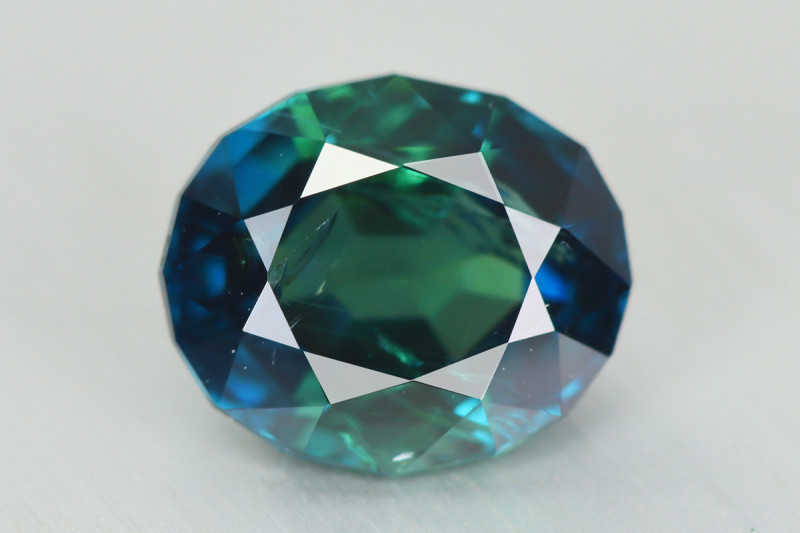
蓝绿色蓝宝石以蓝色和绿色为主色调,有时带有黄色底色。这类宝石近年来人气飙升。
蓝绿比例可能有所不同。如果比例是50-50,就会得到类似帕拉伊巴碧玺的“孔雀蓝宝石”或“美人鱼蓝宝石”。大多数产自美国蒙大拿州。
双色或多色蓝宝石

有些蓝宝石并非混合两种颜色,而是由于色域效应,同时呈现出两种截然不同的颜色。这些蓝宝石被称为双色蓝宝石、双色蓝宝石、杂色蓝宝石或多色蓝宝石。
双色蓝宝石相当罕见。大多数为绿色和黄色,而最稀有(也是最珍贵)的是蓝色和紫色或三色蓝宝石。宝石中心颜色分明的蓝宝石价值更高。
变色蓝宝石

一种稀有且备受追捧的品种是变色蓝宝石,其颜色在不同的光线下(通常是日光和白炽灯)会发生变化。
大多数在日光下呈蓝色或紫色,在白炽灯下则呈紫罗兰色或红紫色。较稀有的种类会发生变化:
绿色至红色或红棕色
红色至棕色
绿色至黄绿色
这里最重要的价值因素是颜色变化的强度(即弱、中或强)。
星光蓝宝石

某些内含物(通常是平行排列的硬水铝石或金红石束)可产生星状光反射,这种光学现象称为星光。星光蓝宝石由此形成。
星光蓝宝石颜色多样,但橙色、绿色和黄色的星光蓝宝石较为罕见。大多数星光蓝宝石拥有六道星光,但一些非常罕见的深蓝色或黑色星光蓝宝石甚至拥有十二道星光。
最受欢迎的星光蓝宝石是透明的深蓝色,带有明亮、清晰、更均匀的星光。
特拉皮切蓝宝石

与星光蓝宝石外观相似的品种是达碧兹蓝宝石。由于内含物的存在,达碧兹蓝宝石也呈现出六线星光状图案,但“星光”并不反射光线。它更像是车轮辐条。
这种效应发生在不常见的形成条件下,碳质包裹体沉积在生长带之间。巴西达碧兹祖母绿就是一个著名的例子。
从宝石的精神层面来看,蓝宝石象征着什么?

蓝宝石的意义和历史
总体而言,蓝宝石通常象征着智慧、天堂和忠诚,但每种颜色都有特定的象征意义。
蓝宝石的颜色和含义如下:
蓝色:诚实与承诺
粉色:爱与宽恕
紫色:精神智慧与可靠性
黄色:成功与知识
橙色:创造力与欢乐
绿色:宁静与平衡
白色:直觉与自由
黑色:力量与权力
棕色:保护与弹性
蓝宝石的文化含义是什么?
蓝宝石民间传说和神话
蓝宝石已有数千年的历史,流传着许多传奇故事。
在伊斯兰教中,第七层天被描述为蕴含蓝宝石。犹太经文将蓝宝石列为大祭司胸牌十二颗宝石之一,并描述天上上帝的宝座由蓝宝石制成。
基督教新约圣经将蓝宝石列为新耶路撒冷十二块基石之一。基督徒认为蓝宝石象征着纯洁、虔诚和天赐的祝福。一个传说称,十诫就镌刻在蓝宝石上。
此外,一些基督徒将星光蓝宝石称为“命运之石”,认为六芒星的三个横梁代表着信仰、希望和命运的美德。
古希腊人用蓝宝石来敬奉太阳神阿波罗。他们还相信蓝宝石能够进入神界,因此许多人在向德尔斐神谕祈求时都会佩戴它。一个12世纪的希腊传说称,特洛伊的海伦之所以如此令人向往,是因为她拥有一颗巨大的星光蓝宝石。
关于蓝宝石的起源,一个古老的波斯传说声称地球坐落在一颗巨大的蓝宝石上,蓝宝石的倒影使天空变成了蓝色。
古代皇室成员相信佩戴蓝宝石可以免受嫉妒和毒害。事实上,蓝宝石作为护身符的用途非常广泛。
 上图:阿拉里希二世国王(484-587)的印章石。这枚印章被认为是最古老的日耳曼王室印章之一。镜像刻字为:ALARICCS REX GOTHORVM = 阿拉里希,哥特人之王。| 图片来源:James Steakley,知识共享署名-相同方式共享 3.0 未本地化版本许可证
上图:阿拉里希二世国王(484-587)的印章石。这枚印章被认为是最古老的日耳曼王室印章之一。镜像刻字为:ALARICCS REX GOTHORVM = 阿拉里希,哥特人之王。| 图片来源:James Steakley,知识共享署名-相同方式共享 3.0 未本地化版本许可证
古代和中世纪历史
最古老的蓝宝石记录是公元前600年至275年,当时的古意大利人伊特鲁里亚人佩戴的珠宝。这些蓝宝石产自斯里兰卡,那里是蓝宝石最古老、最重要的产地。
大约公元1200年,马可·波罗在其著作《世界奇书》中描述了斯里兰卡蓝宝石,蓝宝石才开始被人们广泛认识。中世纪的国王佩戴蓝宝石以求庇佑,这在贵族中也是一种历来流行的习俗。
约公元1100年,教皇英诺森三世规定主教佩戴未雕刻的蓝宝石戒指。神职人员也佩戴象征天堂的蓝宝石。
大约在同一时间,穆斯林科学家比鲁尼早在现代矿物学家之前就发现蓝宝石和红宝石是同一种矿物。

现代史
蓝宝石订婚戒指是贯穿古今的一条主线。现代订婚戒指的习俗始于15世纪至16世纪,当时受到富人和皇室成员的推崇。
蓝宝石曾是备受欢迎的宝石选择,因为非钻石宝石被认为价值更高。事实上,在20世纪初钻石成为订婚戒指的主流之前,蓝宝石订婚戒指曾是美国最常见的主石选择。
如今,蓝宝石首饰已不再局限于富裕精英阶层,但皇室成员依然保持着它的热度。其中一个著名的例子是玛格丽特戒指,戴安娜王妃的订婚戒指上镶嵌着一颗12克拉的锡兰蓝宝石。
除了装饰皇室成员和普通民众之外,蓝宝石如今还有什么用途?

蓝宝石的治疗功效
蓝宝石直到现代仍然是一种珍贵的治疗石。
蓝宝石作为治疗水晶的一些昵称包括:
精神集中与秩序之石
命运之石
新恋情之石
繁荣之石
承诺之石
延续过去的传统,蓝宝石仍然是受欢迎的第三眼脉轮石,打开这个能量中心来提高你的直觉和精神意识。
身体康复
据称蓝宝石的物理益处包括治疗或帮助解决以下问题:
想象
偏头痛
失眠
发烧
免疫系统功能
人们还认为蓝宝石可以改善人的感官。
情绪疗愈
从情感上来说,蓝宝石具有以下功效:
提供放松
消除焦虑的想法
提高注意力
促进自律
激发创造力
鼓励勇敢
接下来,我们来看看专家如何通过分级来确定蓝宝石的价值。
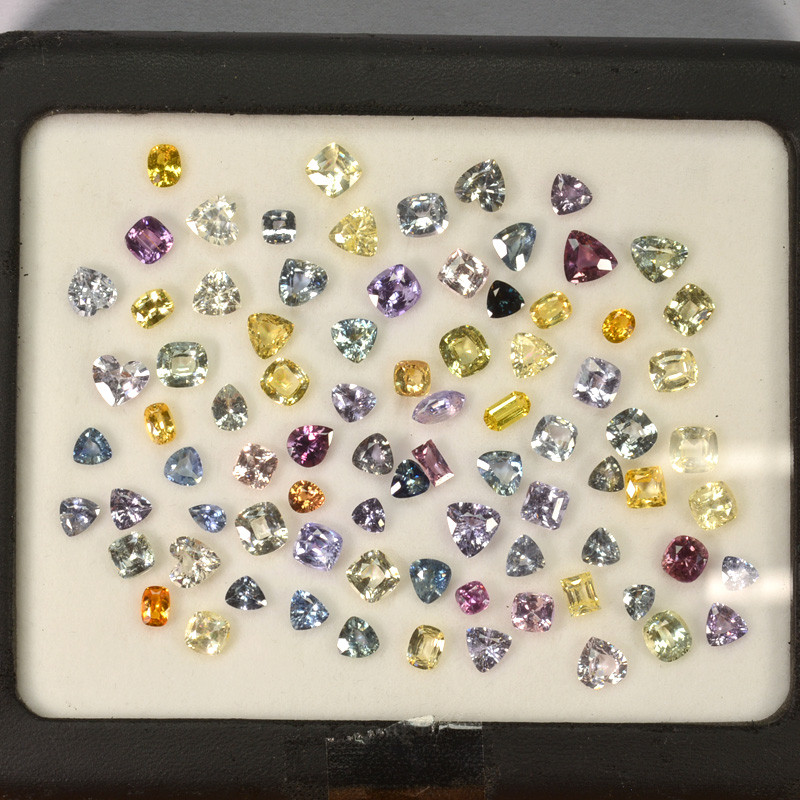
蓝宝石宝石特性
蓝宝石的价值取决于宝石的颜色、切工、净度、克拉重量、处理方式和产地(天然与合成)。
颜色
颜色是蓝宝石价值的首要因素。饱和度高至鲜艳,色调中深至深的蓝宝石最佳。颜色过浅、过深或呈灰色的蓝宝石价值较低。
从色调来看,最有价值的颜色是克什米尔蓝、帕帕拉恰蓝和亮粉色。其次是青绿色,然后是紫色/紫罗兰色,最后是绿色、黄色和棕色。黑色(非星光)蓝宝石价值最低。
稀有的变色蓝宝石和双色或三色蓝宝石也很有价值。
切
宝石切割师(宝石切割师)在切割蓝宝石时,必须考虑色域、多向色性、闪烁度和光学效应。最佳切工能够完美展现蓝宝石的固有特性,拥有适当的对称性,且无暗区。
标准的圆形、垫形和椭圆形刻面切割钻石最受欢迎。价值更高的钻石形状依次为祖母绿形、榄尖形和梨形。
星光蓝宝石必须切割成凸圆形。品质较低的蓝宝石也可能被切割成凸圆形。其他蓝宝石切割方式包括雕刻和珠饰。
明晰
蓝宝石属于II型有色宝石,这意味着可能会有少量可见的内含物。通常,蓝宝石的净度比红宝石更高。一些珠宝商会用钻石净度来评级蓝宝石的净度,例如IF、VVS等。
最珍贵的蓝宝石拥有 VVS 净度——在 10 倍放大镜下看不到可见的内含物——但这种宝石极其罕见。最低净度等级为 SI 至 I(微内含至内含)。大多数蓝宝石的净度介于 VS 至 SI(极微内含至微内含)之间。
常见的蓝宝石内含物包括:
丝绸(长而细的丝,通常由金红石制成)
六边形色带或生长线
指纹(空心、网状、云状区域,充满气体或液体,在其他内含晶体周围形成类似指纹的图案)
锆石晶体,通常带有深色“晕”状裂纹
总体而言,内含物越明显,价值就越低。不过,导致星光或克什米尔蓝宝石呈现天鹅绒般质感的内含物则属例外。
 上图:洛根蓝宝石 | 图片来源:史密森尼学会工作人员 Chip Clark;公共领域
上图:洛根蓝宝石 | 图片来源:史密森尼学会工作人员 Chip Clark;公共领域
克拉重量和尺寸
蓝宝石的克拉重量取决于其颜色和产地。蓝色蓝宝石尺寸各异,但尺寸越大,品质往往越差。大颗、高品质的宝石价值最高。
大多数蓝宝石的克拉单价会随着尺寸的增大而上涨,通常为2克拉、3克拉和4克拉。5克拉以上的蓝宝石,克拉单价会明显更高。
一些创纪录的大蓝宝石包括:
东方蓝巨人:486.52克拉,矢车菊蓝;世界上最大的刻面蓝宝石;1907年在斯里兰卡发现
孤星:9,719.5 克拉,深蓝色;世界上最大的星光蓝宝石;1989 年在美国北卡罗来纳州发现
亚当之星:1,404.49 克拉,浅蓝色;第二大星光蓝宝石;2016 年在斯里兰卡发现
昆士兰黑星:733克拉,黑色;第三大星光蓝宝石;1938年在澳大利亚发现
亚洲蓝美人:392.52 克拉,矢车菊蓝;世界上最昂贵的蓝色蓝宝石(2014 年以 17,305,996 美元的价格售出);1926 年在斯里兰卡发现(原文疑似拼写错误,无法准确翻译)
洛根蓝宝石:422.98克拉,紫蓝色;在斯里兰卡发现
罗马尼亚玛丽皇后蓝宝石:478.68克拉,矢车菊蓝色;曾于2003年售出最大的蓝宝石
印度之星:563.35 克拉,灰蓝色;第四大星光蓝宝石;顶部和底部有 6 条星光;在斯里兰卡发现,18 世纪初
斯图尔特蓝宝石:104 克拉,蓝色;英国皇室珠宝的一部分;可能来自亚洲
无价蓝宝石:451,500 克拉,白色和蓝色;世界上最大的雕刻蓝宝石
治疗
大约 95% 的蓝宝石都经过加热以改善颜色和清晰度,这种做法可以追溯到几千年前。
尽管未经处理的高品质蓝宝石比同等质量的经过处理的蓝宝石价格高出50% 以上,但热处理通常不会显著影响其价值。
偶尔会进行扩散处理,以增强星光蓝宝石的“星光”效果或改变蓝宝石的颜色。较为罕见的是辐照处理,它会使无色蓝宝石变成浅蓝色、橙色或黄色。有时还会进行助熔剂裂缝修复,以提高净度。
我们建议避免使用薄膜涂层、油处理或填充处理的蓝宝石。
合成材料
刚玉是第一种用于商业用途的合成(实验室培育)宝石,始于 1834 年 Marc A. Gaudin 的第一颗合成红宝石。
第一批合成蓝宝石于 1873 年问世,采用助熔剂法制成,随后于 1902 年开发了火焰熔融法。
蓝宝石可以通过溶液工艺(从种子晶体生长)或熔化工艺(如切克劳斯基法或维尔诺伊火焰熔融法)合成。
合成蓝宝石除了看起来比天然材料更完美之外,内部还常常含有弯曲的条纹或气泡。
星光蓝宝石的合成始于20世纪40年代末,当时联合碳化物公司(Union Carbide)发明了“林德星光”(Linde Stars)。这种合成方法是将合成蓝宝石与钛加热,形成人工金红石内含物。大多数林德星光蓝宝石(并非全部)底部都有一个“L”字,便于识别。然而,这种宝石在20世纪70年代停止了生产。
幸运的是,仍然有一些指标可以识别其他合成星光蓝宝石。第一个指标是颜色,它通常比天然星光蓝宝石更鲜艳、分布更均匀。许多合成星光蓝宝石的星光也比天然形成的更完美、更均匀。
从价值上看,实验室培育的蓝宝石比天然蓝宝石便宜得多,每克拉最多可便宜 10,000 美元。
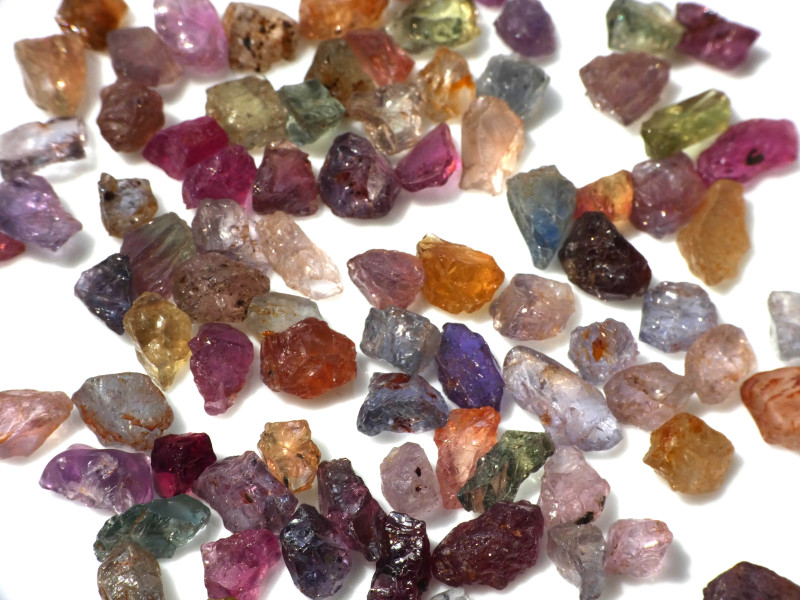
蓝宝石的形成和来源
刚玉石形成于变质岩或火成岩内部。
火成岩中的石头是岩浆冷却后结晶而成的。火成岩必须富含铝,且不含二氧化硅。
在变质岩中,晶体通常是在古代海床受到富含铝的热水变质时形成的。
通常,风化等外力会破坏蓝宝石周围的岩石。之后,蓝宝石会被水流冲刷到河床等冲积层。
采矿地点
最佳蓝宝石产地取决于您想要的颜色,甚至取决于您想要的蓝色色调。历史上和现在最重要的蓝宝石产地是斯里兰卡。
除斯里兰卡外,蓝宝石的主要产地还有:
澳大利亚
印度克什米尔
肯尼亚
老挝
马达加斯加
美国蒙大拿州
缅甸
坦桑尼亚
泰国
越南
您经常会看到蓝宝石的原始产地以商品名称描述,例如“缅甸”、“克什米尔”或“非洲”。某些产地的高品质蓝宝石可能具有一些共同的特征,但这并不能代表该产地的所有蓝宝石。此外,基于产地的商品名称并不总是准确的。信誉良好的宝石鉴定证书更能确保其真实性。
撇开产地不谈,蓝宝石贵吗?有时贵,但价格不一。

蓝宝石的价格和价值
蓝宝石的价格从每克拉 5 美元起,最高可达每克拉 40,000 美元以上。以下我们列出了不同克拉价格区间的蓝宝石,价格按克拉重量依次递减。这些价格涵盖了所有克拉重量的蓝宝石。
蓝宝石价格
刻面克什米尔蓝宝石价格按品质列出:
顶级:每克拉 9,000-50,000 美元
非常好:每克拉 7,000-42,000 美元
优质:每克拉 2,400-22,500 美元
非克什米尔刻面蓝宝石价格:
顶级:每克拉 1,400-10,500 美元
非常好:每克拉 480-8,100 美元
优质:每克拉 250-6,300 美元
一般:每克拉 210-4,800 美元
蓝色蓝宝石凸圆形宝石的价格为每克拉 20 至 300 美元。
粉红蓝宝石和帕帕拉恰蓝宝石价格
其次价值的是多面帕帕拉恰蓝宝石:
顶级:每克拉 1,000-25,000 美元
非常好:每克拉 950-22,000 美元
优质:每克拉 900-20,000 美元
关于刻面粉红色蓝宝石的价格:
非常好:每克拉 160-8,400 美元
优质:每克拉 140-7,800 美元
一般:每克拉 50-1,050 美元
其他彩色蓝宝石价格
其他刻面彩色蓝宝石的价格:
紫色蓝宝石:每克拉 280-1,840 美元
黄色蓝宝石:每克拉 50-1,625 美元
白色蓝宝石:每克拉 50-800 美元
绿色蓝宝石:每克拉 20-240 美元
黑色蓝宝石:每克拉 4-290 美元
蓝宝石品种价格惊人
多面变色蓝宝石的价格从每克拉 120 美元到 5,000 美元不等。
星光蓝宝石价格:
彩色:每克拉 100 至 500 美元
蓝色:每克拉 20 至 1,200 美元
黑色:每克拉 13 至 30 美元
在结束之前,我们将教您如何保养蓝宝石。
蓝宝石的保养和维护
由于其耐用性,大多数蓝宝石适合日常佩戴,并且只需极少的宝石护理。
就褪色而言,几乎所有蓝宝石都会因长时间日晒而出现一定程度的褪色。黄色蓝宝石,有时甚至是帕帕拉恰蓝宝石,更容易因日晒而褪色。有趣的是,许多珠宝商会保留黄色蓝宝石的颜色,以使其更加丰富,这确实有效。黄色蓝宝石的颜色稳定性取决于着色剂。
裂纹、丰富的内含物、裂缝填充以及油处理会使蓝宝石的强度降低。请将这些类型的蓝宝石远离刺激性化学品或机械清洁系统。
您可以使用超声波或蒸汽清洁器等机械设备清洁大多数其他蓝宝石。不过,最安全的清洁方法是使用软毛牙刷、温水和温和的肥皂。
蓝宝石质地坚硬,会刮伤大多数宝石。最好将其与其他宝石分开存放。

哪颗蓝宝石让您着迷?
现在,你应该明白蓝宝石为何数百年来一直享有如此崇高的地位了吧。它拥有丰富的传说、丰富的功效和绚丽的色彩,还有什么理由不爱它呢?
准备好找到你的心头好了吗?立即选购蓝宝石吧!
搜索Gemstone Encyclopedia
最新的文章
棕榈象牙雕刻,又称植物象牙,是象牙的天然替代品,取自南美洲棕榈树(Phytelephas palm)的果实,并以符合伦理的方式采集。本指南将带您全面了解棕榈象牙!
15th Jan 2026
彩虹格纹日光石是一种长石,由于内部含有各种包裹体,呈现出三种绚丽的光学效应。它绚丽多彩的光泽和格纹图案使其成为收藏家梦寐以求的珍宝!
12th Jan 2026
文章分类
How To's is where you will find helpful articles from gem Rock Auctions on how to cut gemstones, select gemstones and buy gemstones.
9文章数




